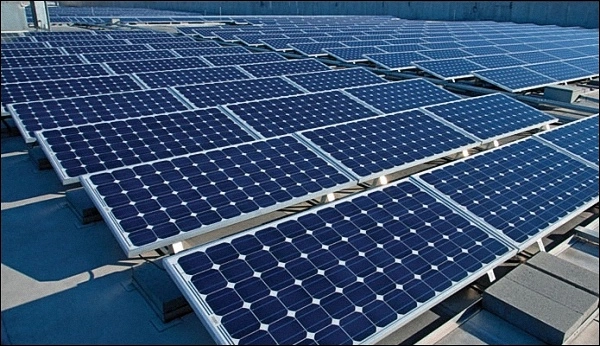Solar power systems are all different but share similar components and characteristics. Different panels, inverters, and batteries make up a system, and all systems are either alternating current (AC) coupled systems or direct current (DC) coupled systems. The main difference between an AC-coupled and a DC-coupled system is the path electricity travels after solar panels produce it. AC solar battery-coupled systems are more common in residential and commercial solar installations, while DC solar battery-coupled systems are often used in off-grid and remote installations. However, DC-coupling is gaining traction today with more options becoming available.
DC-Coupled Systems Defined
In a DC-coupled configuration, electricity travels from the solar panels to a charge controller that funnels into a battery system, meaning solar electricity is not inverted from DC to AC and back to DC before being stored in the battery. Electricity generated from solar panels is inverted one time from DC to AC. Additionally, in DC-coupled systems, solar panels and batteries share an inverter and grid interconnection, minimizing equipment costs and the likelihood of power outages from running interconnection lines to the grid. In the case of DC-coupled systems, the power fed into the ESS is not restricted by an inverter. DC-coupled systems rely only on the multimode inverter supplied by the PV array and ESS. The energy storage system is then charged directly with DC output power from PV modules, and the PV array and energy storage system do not require DC to AC conversion.
Oversizing often occurs with DC-coupled systems which is when the amount of solar energy produced exceeds the system’s inverter rating. In this scenario, using the same inverter, systems can generate more power by adding more solar PV panels to a roof. In an oversized PV system, the solar power not used by your home is sent to charge the home battery, water heating system, EV charger, and other things. DC-coupled inverters allow for more storage of excess energy and oversizing, enabling more savings.
AC-Coupled Systems Defined
In an AC-coupled solar configuration, DC solar electricity is transferred from solar panels to a solar inverter, converting the current to AC electricity. The AC electricity can travel to another inverter, converting it again to DC to be stored within a battery. In AC-coupled systems, electricity stored in the battery must be inverted three times before use. Energy storage systems (ESS) with an AC-coupled setup have a lithium-ion battery module, a battery management system (BMS), and inverters. These units are easily installed and are a common choice for systems needed for sites connected to the grid because inverters are not as capable of running off-grid.
In AC-coupled configurations, power generated from PV modules is first transferred to AC before connecting with the energy storage system – essentially, PV module output is funneled through an inverter before connecting with the ESS. This power is then sent to a backup loads panel containing specific loads previously stored in the main service panel. The power must be transferred to DC before charging the ESS. Power output from the ESS must be transferred again to AC, which is achieved with an additional multimode inverter. The backup panel is configured alongside the ESS, and the multimode inverter converts AC to DC while the ESS charges, and from DC to AC when it is discharging. In an AC-coupled system, the backup loads panel, ESS, and PV array can function separately from the grid. In the case of power outages, the multimode inverter replicates grid signals, meaning the inverter stays online, and the PV array continues to generate power for the backup loads panel, charging the ESS with extra power. Implementing an ESS on a grid-tied PV configuration is somewhat common. While this can be a hassle regarding system design, AC-coupling the ESS is typically the more efficient solution.
AC-coupled systems enable batteries to charge from the grid and solar PV panels. If a solar system does not generate enough electricity for battery charging, you can lean on the grid to supply your battery for arbitrage and resiliency advantages. This is key if you want to participate in an energy storage pilot or demand response program as the utility might require control of the energy flow to/from the battery.
Which System is Right for You?
When deciding between an AC-Coupled system and a DC-coupled system, it’s important to ask a few questions. Is there an existing solar system on site, and do you want to add an energy storage system to it? Are you installing a new solar and energy storage system at the same time? How important are upfront installation costs and a less complex installation process? Before deploying any system, developers need to ensure the economics pencil out, whether it’s a solar-only system or if energy storage is a viable option. Join the ETB Developer platform14 days to analyze the avoided cost of projects and make sense confidently.

